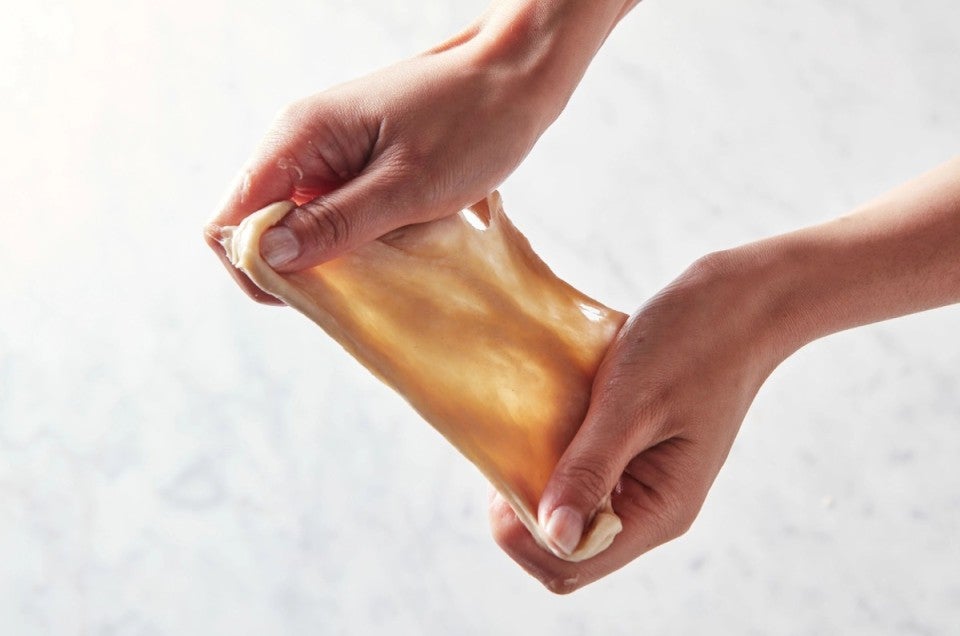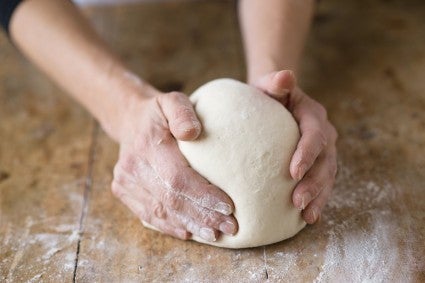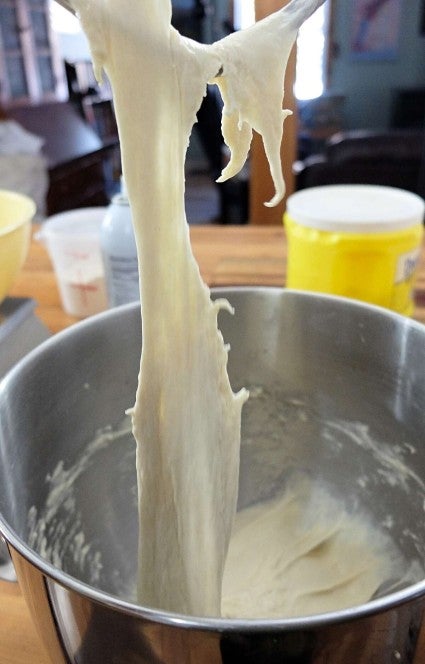What is the windowpane test for bread dough?
How to perform this simple test — and why it matters.


How do you know when your yeast dough has been kneaded long enough?
The terminology used in recipes is both subjective and potentially confusing. “Knead the dough until it’s smooth and supple” or it feels “bouncy and elastic under your hands.” Or it feels like your earlobe — or a baby’s bottom.

How smooth is smooth enough? What if you don’t have a baby around for comparison?
Don’t despair. There’s a quick test to find out if your dough is sufficiently kneaded. It’s called the windowpane test, and it lets you actually see with your eyes how strong the dough is.
When you think your dough is sufficiently kneaded, grab a hunk about the size of a ping pong ball. Flatten it between your fingers, as though you were making a tiny pizza. Let it rest for a couple of minutes, then flatten some more. Very gently pull on opposite ends to stretch out the middle.
As you pull, the dough in the center will become thinner and thinner until at some point it tears. This may happen almost immediately, or the dough may stretch so far you can see light through it; this is called “achieving the windowpane.” The point where the break occurs tells you just how developed your dough is, and whether or not you should continue to knead it.
In order to rise and hold its shape, yeast dough depends on gluten, a series of joined proteins that form a stretchable web that traps and holds carbon dioxide emitted from the yeast as it feeds. As you knead dough you “exercise” the gluten, both strengthening it and aligning it into its desired web. The stronger and more elastic that web is, the more thinly it can stretch itself without breaking — and the better your bread will rise.

The windowpane test lets you see just how strong and elastic your dough is at any point. Try it when you’ve first started kneading, and the dough will break almost as soon as you start stretching it. But after sufficient kneading, you’ll be able to stretch it much more thinly.
Sometimes yes, sometimes no. The windowpane test isn’t “pass or fail;” it simply tells you what stage the dough’s at in its development, with your goal being dough that’s perfectly developed — its gluten at full strength — just before it’s shaped.
General rules of thumb: If you’re baking bread that’s going to rise in the bowl (bulk ferment) for only a short time before being shaped (say, an hour or so), then you want the gluten almost fully developed. When it’s sufficiently kneaded you should be able to stretch the dough until you can start to see light through it in spots.
But if you’re baking bread that’s going to rise in the bowl (and/or in the fridge) for hours before being shaped, then you want the gluten much less developed. When you stretch this dough, it may only stretch half an inch or so before tearing — and that's OK, because the dough’s gluten will continue to gain strength during those hours it’s resting.

Perform the windowpane test anytime you’re uncertain about where your dough is in the development process — the journey from “This dough is just a sticky blob” to “OK, it’s ready to shape.” This uncertainty can spring from a number of sources:

Because the bran in whole grain dough can damage the developing strands of gluten, the windowpane test won't work the same as it does with white-flour doughs. You may eventually develop a windowpane, but it’s more likely to happen if the dough has rested overnight, giving the bran a chance to soften its sharp edges.
Ready to take a deeper dive into developing yeast dough? See our two-part series: Why kneading isn't always the best way to develop bread dough, followed by Why this pro baker doesn't knead.
Cover photo by Rick Holbrook, food styling by Kaitlyn Wayne.

